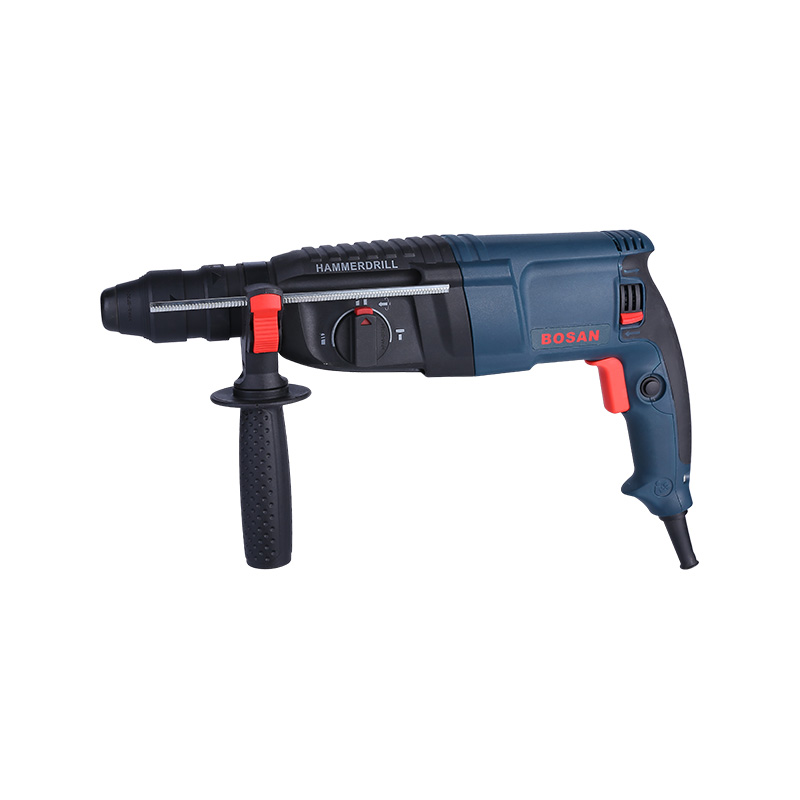The construction industry has witnessed a remarkable transformation with the advent of power tools, particularly the evolution of electric hammer drills. With their robust capabilities, the 850W 26mm electric hammer drill stands as a testament to this progress. Its power, precision, and versatility have significantly impacted construction efficiency and safety in several ways.
Power Enhancement: The 850W power output signifies a substantial advancement in drilling capability, enabling faster drilling speeds and increased efficiency. This enhancement has been crucial in meeting the demands of modern construction, especially when dealing with tough materials like concrete or masonry.
Precision Engineering: Technological advancements in motor design, gear systems, and hammer mechanisms have facilitated greater precision in drilling. This precision is vital in ensuring accurate hole placements and consistent drilling depths, minimizing errors and material wastage.
Improved Ergonomics: Manufacturers have focused on ergonomic designs, integrating features such as anti-vibration technology, ergonomic handles, and lighter yet durable materials. These advancements prioritize user comfort and reduce operator fatigue, allowing for prolonged use without compromising efficiency.
Dust Management Systems: With growing awareness of health risks associated with dust inhalation, electric hammer drills now often come equipped with integrated dust extraction systems. These systems efficiently collect and contain dust particles generated during drilling, significantly improving air quality on job sites and protecting worker health.
Increased Efficiency:
Enhanced Speed and Precision: The 850W power output of the electric hammer drill enables faster drilling speeds and improved precision. It allows workers to complete tasks efficiently, reducing overall project timelines.
Versatility in Applications: These drills are designed to handle various materials such as concrete, stone, brick, and more. Their adaptability across different surfaces makes them indispensable on construction sites, eliminating the need for multiple tools for different tasks.
Reduced Manual Labor: The power and efficiency of electric hammer drills decrease the physical strain on workers. This reduction in manual labor not only improves productivity but also minimizes the risk of injuries associated with repetitive tasks.
Impact on Safety:
Precision and Control: Electric hammer drills offer better control during drilling operations, reducing the likelihood of errors or accidents caused by slips or unexpected movements. This precision enhances overall safety on construction sites.
Dust Extraction Systems: Many modern electric hammer drills come equipped with dust extraction systems, significantly reducing the inhalation of harmful particles like silica dust. This feature improves the health and safety of workers, mitigating the risks of respiratory issues.
Ergonomic Design: Manufacturers have focused on ergonomic designs, incorporating features like anti-vibration technology and handles with improved grips. These additions reduce operator fatigue and enhance control, ultimately contributing to a safer work environment.
Challenges and Future Developments:
Despite the numerous advantages, challenges persist. Electric hammer drills, while powerful, may pose risks if not used correctly. Ensuring proper training and adherence to safety protocols remains essential.
Future developments may focus on further enhancing safety features, such as advanced sensor technology for real-time monitoring of drilling conditions or improvements in battery efficiency for cordless models. Additionally, advancements in materials used for drill bits could lead to increased durability and efficiency.
the evolution of electric hammer drills, exemplified by the
850W 26mm variant, has significantly revolutionized the construction industry. Their impact on efficiency and safety underscores the importance of technological advancements in empowering workers, reducing manual labor, and ensuring a safer working environment. As these tools continue to evolve, the industry can anticipate even greater improvements in construction practices, fostering efficiency and safeguarding worker well-being.



Contact Us